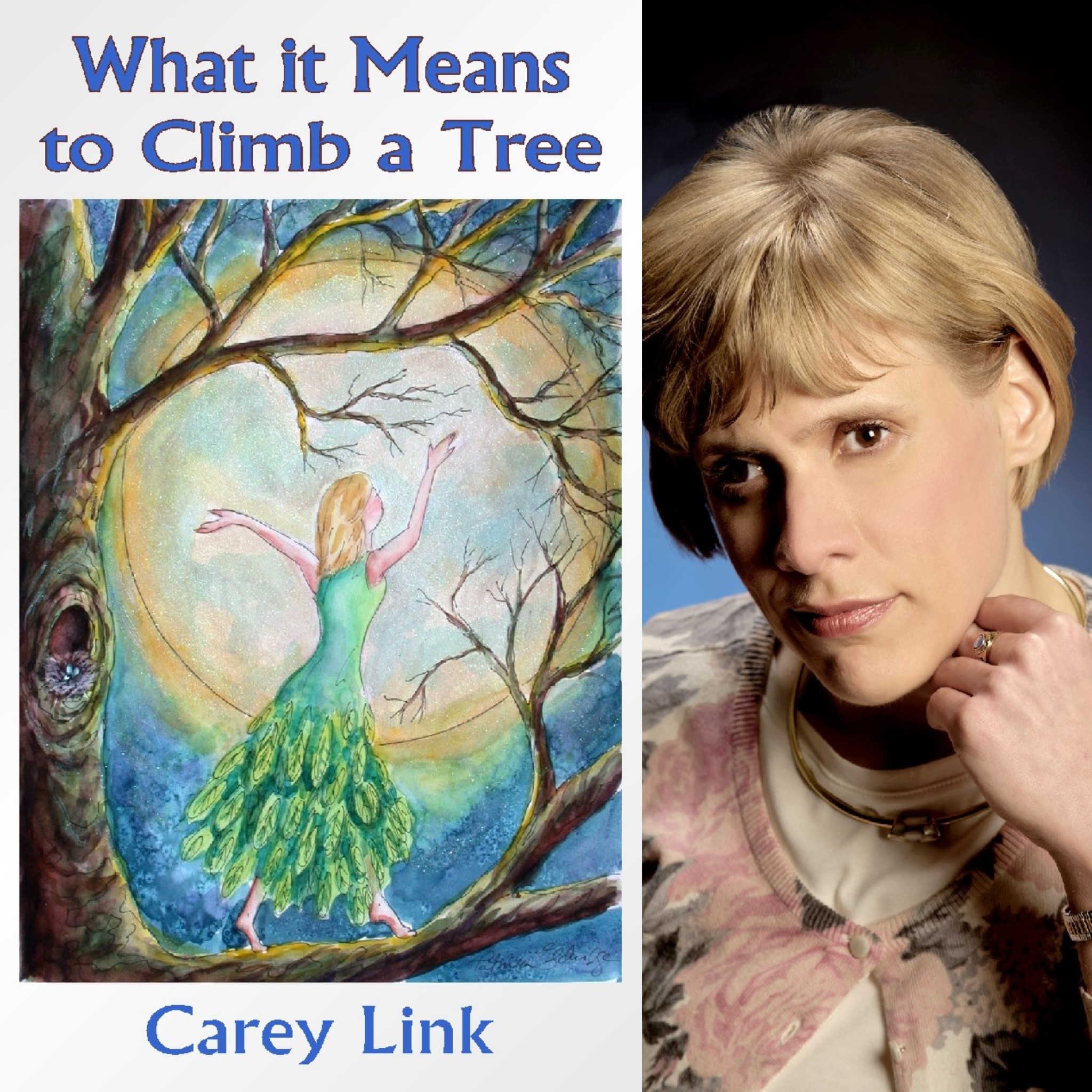With a beautiful simplicity, Carey Link‘s poetic sequence about trees lets us see them anew, roots, bole, branches, foliage, and fruit, and the sixteen individual poems weave their imagery throughout, creating a musical seventeenth, the book as a unified whole. “A labyrinth green / sways above me,” Link writes, and it is we who look up.
–Kelly Cherry, The Retreats of Thought: Poems
Deceptively simple, these tree poems invite the reader into a kaleidoscope of wonder where treasure is found in arches and hollows, graceful lines and resonant repetition. You’ll want to read this collection again and again to savor each ring and shadow.
–Irene Latham, THE COLOR OF LOST ROOMS
After reading Carey Link‘s What It Means to Climb a Tree, it seems to me that those who cannot or do not climb trees are more capable of discovering intense green-, blue-green-, gold-, and burgundy-filled visions and epiphanies from either the highest or lowest limbs of any tree, anywhere–perhaps much more than those who are limited to climbing trees only in the most literal sense. In Carey’s first collection of poems, she expresses her experience of something much more magical and mystical–cloisters of diamond light, curves and arches of the spirit, the maternal cradling of hollows, eternal time in rings, “fingers of branches,” “labyrinths” of leaves, and the “swing-sway” of her own human imagination–which is, of course, without limit. I highly recommend that the reader climb these trees with the poet who created them, always alert for the surprising “woo-calls” and the “cuckoo” in the corner.
–Bonnie Roberts, To Hide in the Light, Dances in Straw with a Two-Headed Calf, Bonnie Roberts: Greatest Hits, Professor, The University of Alabama in Huntsville, NEH Fellow (Paris), Fellow in Verse (Dublin), Fulbright Scholar (Turkey)






Reviews
There are no reviews yet.